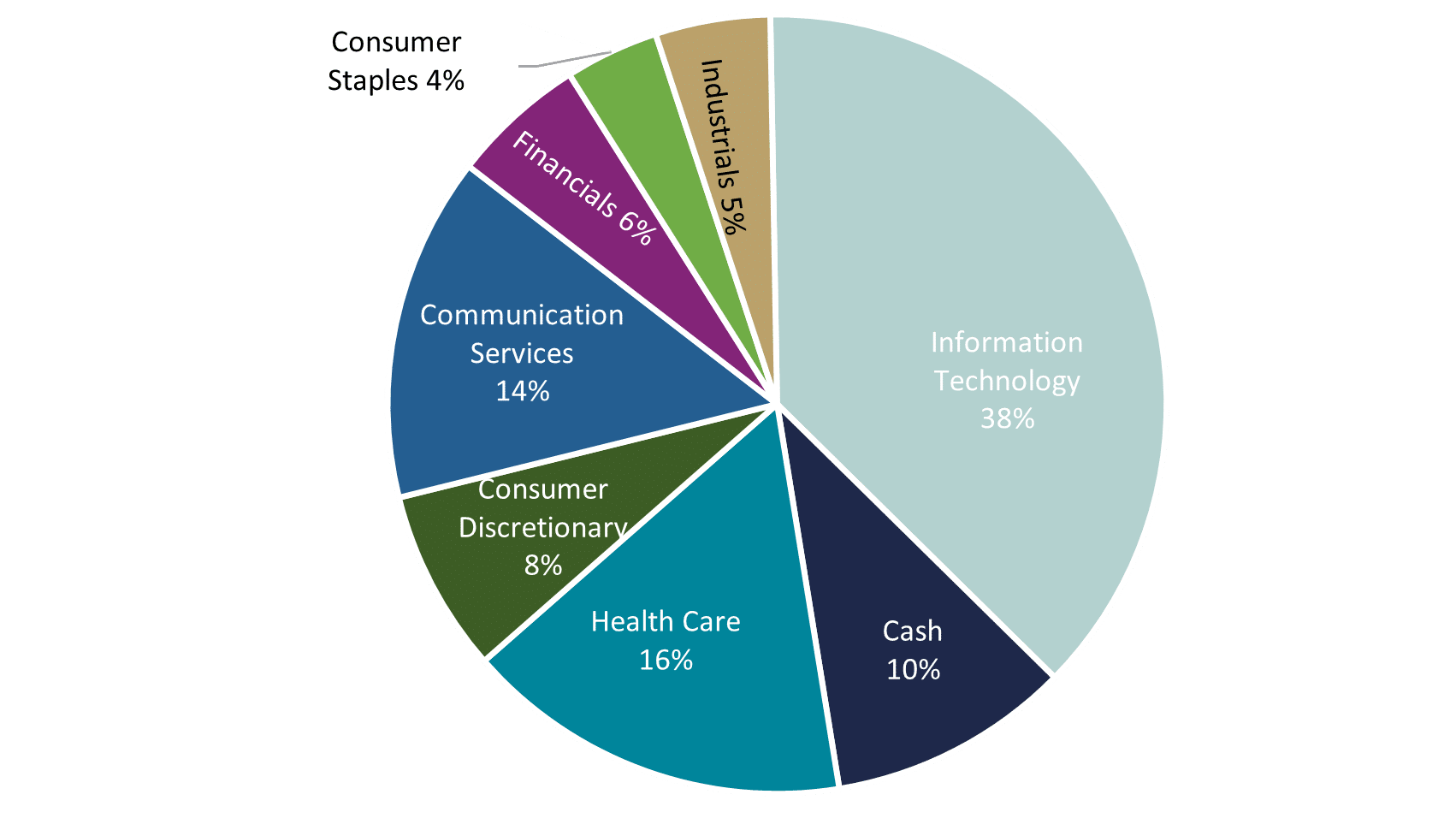Overview

The Investment Policy Group (“IPG”), comprised of all portfolio managers and research analysts, is the catalyst in our decision-making process. Portfolio policy and stock selection are reviewed at IPG meetings held at least twice weekly. Specific decisions regarding purchases and sales, as well as the percent of the portfolio any security is to represent, are based on consensus resulting from these meetings and are implemented across all thematic growth accounts unless there are specific client restrictions. In fully discretionary accounts with no client restrictions, the portfolio managers have no discretion to enact trades that are not approved by the IPG. As the markets do not operate in a vacuum, the IPG also meets twice a month to discuss macroeconomic issues. In these meetings, the IPG makes short-term economic forecasts and systematically reviews long-term economic, social, political and demographic trends having important influences on the financial markets and the companies that we follow. Sector and industry group allocation may be confirmed by this top-down thinking.
Thematic Growth
The Thematic Growth Strategy focuses primarily on the secular growth stocks derived from our equity discipline – sourced predominately from the large and mid-cap portfolios. While maintaining high quality characteristics, this approach is less constrained in terms of position size and market capitalization, and more concentrated – with lower turnover.
Philosophy and Process
At Montag & Caldwell, we believe that good investment returns are derived from the competent, disciplined, fundamental analysis of individual securities, performed by experienced professionals operating as a team. We are long-term investors focusing on high quality growth opportunities. Our process is primarily bottom-up in which we inter-relate valuation with earnings momentum. We offer a concentrated portfolio of approximately 20 issues actively managed by Managing Principal and CIO, Scott Thompson. While we recognize the need to diversify a portfolio’s securities and sectors in order to reduce its risk, we believe that, in order to add value, it is also important to have some sector concentration in the portfolio. We are willing to totally exclude a sector from our portfolios if we do not see sufficiently accelerating earnings and/or appropriate valuations. Our growth equity philosophy utilizes a valuation technique which focus’ on a company’s future earnings and dividend growth rates. The process utilizes a present valuation model in which the current price of the stock is related to the risk adjusted present value of the company’s estimated future earnings stream. The identification of appropriate stocks for consideration for our thematic growth strategy begins with screening a universe of publicly traded U.S. securities for market capitalization of at least $10 billion, an expected 10% earnings growth rate, and a proprietary quality evaluation. The thematic growth strategy then focuses on those industries and companies we believe are enjoying the strongest, most enduring secular growth trends. A holding will be reviewed for sale when it reaches our target price, which is normally 120% of the estimated fair value. A significant earnings disappointment will trigger an immediate review of the holding and a decision will be made to buy additional shares or reduce or eliminate the position.
Sector Weights

June 30, 2025
Portfolio sector weights are of the Montag & Caldwell Thematic Growth Representative Account. Please see the disclosures presentation at the bottom of this page for important information that is pertinent to this chart. Source: FactSet.
Portfolio Detail
Disclosure: As of June 30, 2025. Portfolio characteristics and top ten equity holdings are of the Montag & Caldwell Thematic Growth Representative Account. Please see the disclosures presentation at the bottom of this page for important information that is pertinent to these tables.
Disclosure: References to specific portfolio securities are not intended as recommendations of those securities and carry no implications about past or future performance. Information about all recommendations made within the past year is available upon request.
Characteristics
Source: FactSet
| Number of Holdings | 24 |
| P/E Next 12 months | 30.71 |
| 5 Yr. Average ROE | 30.51% |
| Long-Term Debt to Capital | 26.07 |
| Estimated 3-5 Year EPS Growth | 13.83% |
| Weighted Average Market Cap | $1,010,509MM |
| Median Market Cap | $216,299MM |
| Return on Invested Capital (ROIC) | 26.55 |
| Active Share | 69.97% |
| 12 Months Turnover | 28% |
Top Ten Holdings
Top Ten Holdings are a percentage of Equities only. Source: Portfolio Accounting System. References to specific portfolio securities are not intended as recommendations of those securities and carry no implications about past or future performance. Information about all recommendations made within the past year is available upon request.
| Microsoft Corporation | 6.9 |
| Visa Inc. | 6.2 |
| NVIDIA Corp. | 6.0 |
| Intuit Inc. | 6.0 |
| Alphabet Inc. CL A | 5.7 |
| Uber Technologies, Inc. | 5.3 |
| Palo Alto Networks, Inc. | 4.7 |
| Eli Lilly & Co. | 4.6 |
| Monster Beverage Corp. | 4.3 |
| Chipolte Mexican Grill Inc. | 4.3 |
Disclosures
This information is provided for illustrative purposes only. It should not be considered investment advice or a recommendation to purchase or sell any specific security or invest in a specific strategy nor used as the sole basis for an investment decision. All investments carry a certain amount of risk. There are no guarantees that the strategy will achieve its investment objective, and loss of value on investments is a possibility. Principal risks associated with this strategy include: • Growth Stock Risk – These stocks may be more sensitive to market movements because their prices tend to reflect investors’ future expectations for earnings growth rather than just current profits. • Mid-Capitalization Stock Risk – The stocks of mid-capitalization companies may have greater price volatility, lower trading volume, and less liquidity than the stocks of larger, more established companies. • Sector Risk – To the extent the strategy has substantial holdings within a particular sector, the risks associated with that sector increase. • Foreign Investment Risk – From time to time, the strategy may invest in U.S. registered ADRs and foreign companies listed on U.S. stock exchanges which involve additional risks that may result in greater price volatility. • Liquidity Risk – The strategy may not be able to purchase or dispose of investments at favorable times or prices or may have to sell investments at a loss. • Market Risk—Market prices of investments held by the strategy may fall rapidly or unpredictably due to a variety of factors, including changing economic, political, or market conditions, or other factors including war, natural disasters, or public health issues, or in response to events that affect particular industries or companies.